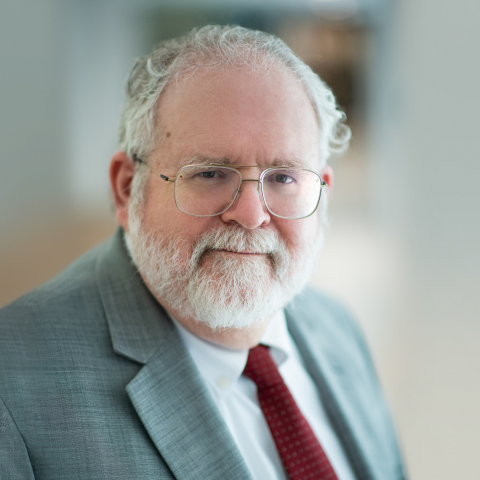With India’s importance in geopolitics rising—perhaps in no small part to its charismatic leader, Narendra Modi—it may be easy to assume the Hindu nationalist political project he has become the leader of is something akin to Christian nationalist movements in the U.S.
That’s not the case, the Hudson Institute’s Bill Drexel writes in today’s Dispatch Faith. While religion does indeed play an important role in the growing Hindu nationalist movement in India, that’s too narrow a lens through which to view it.
Understanding a society as vast and complex as India’s has never been easy, but in recent years the meteoric rise of Hindu nationalism in the world’s largest nation has compounded that challenge for most Americans. The gargantuan mass movement behind Prime Minister Narendra Modi has championed a vision of India that places Hindu heritage at the center of the nation’s identity. With this formidable force remaking Indian society, reconstructing the country’s monuments, and rebranding its civilization, it is only natural to grasp for the closest analogues that come to mind to understand these rapid transformations.
The most obvious association in the American context—Christian nationalism—is a poor lens through which to view the movement behind the new India, lending itself to over spiritualizing and underestimating Hindu nationalism’s mass appeal. Even if Christian nationalism—which seeks to formally establish the United States as a Christian nation with biblically grounded laws—appears ostensibly similar, applying this more familiar American template is likely to lead astray anyone who wants to understand the political culture behind an emerging global power and, very soon, the world’s fourth largest economy. But as a counterpoint rather than a comparison, Christian nationalism can serve as a revealing foil—illuminating Hindu nationalists’ ideas, institutions, and impacts on their own terms.
Christian theologians, Hindu organizers
To be sure, Hindu nationalism and Christian nationalism do share some meaningful parallels. Both are breeds of cultural nationalism, emphasizing shared heritage and traditions as the key determinant of national coherence. Both seek to revise the relationship between church (or temple) and state, moving beyond promoting appreciation for—or even rootedness in—“Judeo-Christian” heritage or “Indic civilization” toward a system that explicitly privileges their nation’s largest religious traditions. And at their worst, both are infamous for identitarian chauvinism and intolerance to minority groups, especially Muslims. Even if they ultimately serve as poor metaphors for one another, it is fair to say that they resemble each other more than any other major political paradigms in either country.
But move beyond these external similarities toward their motivating beliefs, and major divergences start to appear—starting with each movement’s ideological roots. Observers familiar with the highly defined Protestant faith commitments of Christian nationalist leaders may be surprised to discover that the father of contemporary Hindu nationalism, V.D. Savarkar (1883-1966), was an unabashed atheist who refused to allow Hindu religious rites at his wife’s funeral and publicly encouraged Hindus to give up religiously motivated vegetarianism. What’s more, he was critical of the very concept of “Hinduism”—arguing that the term was akin to lumping together the conflicting beliefs of England’s Jews, Jacobins, Utilitarians, and Trinitarians and calling it “Englishism.”
Savarkar’s metaphor may be apt. Scholars of religion endlessly debate how to reckon with Hinduism’s mind-bogglingly diverse beliefs, practices, and rituals. While Protestantism stands as perhaps the most stringently defined major religious tradition, with its emphasis on doctrinal precision and scriptural authority, Hinduism represents the opposite end of the spectrum—easily the least systematized of the world’s major faiths. Regardless of where one falls in the debate about Hinduism’s coherence, there is no doubt that it contains far more theological diversity than Christianity’s many denominations, or Abrahamic religions as a whole. Religious Hindus often disagree, for instance, as to whether there are many gods (millions, by some estimates), one, or none—the latter even having several independent sects championing different variants of atheism. That’s just one example. Hinduism writ large also contains multiple, sometimes contradictory paths to enlightenment that Hindu swamis teach—from devotion to personal deities, to philosophical contemplation, to ritual practice, to mystic yoga. Crafting social and political movements from religious traditions as different from one another as Hinduism and Christianity was bound to create coalitions that look and operate differently.
Sidestepping the complexities of reconciling disparate Hindu creeds and traditions, Savarkar instead argued that Hindus are better viewed as the ethnic group that has carried forward the tangle of interrelated streams of faith and philosophy that make up Hindu civilization. The proper comparison, in Savarkar’s estimation, was not so much to what we today may refer to as Christian nationalism as it was to Zionism. That vision of nationalism was connected primarily to ethnic Jews, even as they were bonded by a common faith tradition and its historical geography. In Savarkar’s 1923 canonical work defining Hindu nationalism, Essentials of Hindutva, he even goes so far as to claim that the Jews may be the only other people in the world that can claim national coherence on par with the Hindus, for this reason. Still today, many Hindu nationalists have a special affinity for Zionists, whom they see as their closest ideological counterparts. Likewise, the usage of “Hindu” in “Hindu nationalist” may be best understood as similar to the use of “Jew”—an identity usually employed more ethnically than religiously, though it is often both.
Drawing on prior anti-colonial Hindu revivalist movements from across India, Hindu nationalism ignited in the mid-1920s, disproportionately led by Brahmin Hindus from the western region of Maharashtra. Though the Brahmin caste traditionally performs priestly duties at the top of the caste hierarchy, these early leaders of Hindu nationalism echoed the unusually political role of Brahmins in the region’s Maratha Empire (1674-1818), a Hindu polity that left the area with a pronounced sense of cultural pride.
Like early 20th-century Zionists and other nationalist movements of the time, the first self-described Hindu nationalists were much more modernist than mystic. Their guiding pursuit was not nirvana, but a muscular state driven by scientific rationality—so much so that they even drew some inspiration from the strident statism of fascist movements in Europe, which were emerging contemporaneously (and whose full horrors had yet to unfold). Their “rituals” were not centered on worship, but on building an ethos of martial discipline, collective memory, and social service, with regular gatherings to exercise, sing patriotic songs, and study Hindu history—in addition to mobilizing for disaster relief and community aid. This state-building character remains deeply ingrained in the DNA of Hindu nationalism, and for many Hindu nationalists, religion is secondary or even incidental to their primary goal: strengthening Hindu society.
This is not to say the first iterations of Hindu nationalism ignored spirituality. Even Savarkar defined ethnic Hindus as anyone for whom India is fatherland and holy land—regardless of specific creed or lack thereof—and elements of Hindu religion have been integral to Hindu nationalist organizations from their earliest beginnings. As the movement has evolved from its initial stages, it has also embraced a pronounced sense of religiosity. Indeed, a primary catalyst in Hindu nationalism’s recent ascent was a successful campaign to construct a Hindu temple in the place of a 16th-century mosque purportedly built over the Hindu deity Ram’s birthplace, opened to the public in January 2024. Devotional Hindu groups now form a central pillar of the Hindu nationalist coalition, and the religious wing of the Hindu right in India is likely to continue to play a prominent role in the broader movement for the foreseeable future.
But while Christian nationalist leaders often present themselves as theological purists with unyielding fidelity to holy writ, Hindu nationalist leadership has emerged primarily from grassroots organizers—focusing on unifying and mobilizing community groups rather than parsing doctrine. Put differently, if Christian nationalism is about christianizing the nation, Hindu nationalism is more about nationalizing the Hindus. These fundamentally different approaches have produced dramatically different outcomes—and help explain Hindu nationalism’s remarkable success in contemporary India.
The organization family
Fast-forward to the present day, and the ideological differences between Christian nationalism and Hindu nationalism have grown into striking institutional disparities. Today’s Christian nationalism exists as a diffuse patchwork of leaders and institutions, spinning off from theological and institutional legacies of prior waves of Protestant political fervor: Centuries-old allegiances to Protestant Christendom, Puritanism, Manifest Destiny, and Cold War Christian anti-communism have left traces, to varying degrees, on the diffuse set of Christian nationalist thinkers and organizations that exist today. And while many American evangelicals desire a more pronounced role for their faith in public life, they have typically gravitated toward other approaches for bringing religious values into society: “common good” public engagement, issue-based advocacy, or moral majority campaigning, to take a few examples. As such, Christian nationalism has lacked the institutional coherence needed to be a major force in American politics and was functionally relegated to being merely one among many factions of the religious right. Even if reenergized in recent years, it remains an inclination more than a movement.
Hindu nationalism, by contrast, has exploded in popularity over the last century from a small, politically irrelevant clique to a massive nationwide ecosystem of powerful, coordinated organizations touching nearly every aspect of Indian society. At its core is the Rashtriya Swayamsevak Sangh (RSS), or “National Volunteer Organization,” a cadre-based body founded in 1925 whose thousands of volunteers conduct daily shakhas (gatherings) focused on physical training, nationalistic education, and community service projects among its millions of members. The RSS spawned the BJP, now the world’s largest political party with 110 million members, and has produced its most successful politicians, including Prime Minister Narendra Modi, who has won more democratic votes than any other politician in history. It has also established influential offshoots like the Vishva Hindu Parishad (literally, the “World Hindu Council”); the Bharatiya Mazdoor Sangh, one of the world’s largest labor unions; and dozens of other affiliated organizations spanning education, health care, rural development, and media. Collectively these are known as the Sangh Parivar, or “Family of Organizations.”
Bonded by common roots and continued cross-pollination with personnel cultivated through the RSS, the Sangh Parivar has been successful in adapting Hindu nationalist ideas and narratives to a wide range of audiences across Indian society, mostly through grassroots efforts. That, together with the electoral success of the BJP, has made Hindu nationalism a diverse and composite mass movement, dwarfing the size and influence of Christian nationalism, and absorbing varied groups and perspectives that—like Hinduism more broadly—do not always strive for strict coherence. It has also blurred the lines between who and what is Hindu nationalist, exhibiting a full spectrum of associations including everything from radicals, to hardliners, to moderates. The movement’s influence has grown so pervasive that even their political opponents tried adopting more outwardly Hindu symbols and religious displays in their campaigning—a resounding testament to the breadth of social transformation that the Hindu nationalists have achieved.
The difference between the impacts of Hindu nationalism and Christian nationalism thus brings us full circle: Christian nationalism’s leaders have tended to be poor institution-builders—preferring doctrinal purity over the many compromises needed to build and maintain broad-appeal movements. Hindu nationalists, by contrast, have made community organizing their movement’s centerpiece, assimilating and carving out space for more religiously oriented elements, but treating its project as primarily an exercise in unifying a Hindu society.
To Christian ears, it may sound ironic that Protestant Christianity’s tendency toward sophisticated theological coherence has inadvertently resulted in a more incoherent brand of cultural nationalism. But Protestantism’s ever-increasing number of denominations tells a similar story of theological focus and institutional balkanization—a model that may work for producing well-informed disciples, but not so much for broad political appeal.
Meanwhile, Hindu nationalism’s flexibility and adaptability in absorbing sometimes inconsistent groups and ideas into its fold—even if often under the auspices of social organizing rather than religious adherence—bears an unmistakable resonance with Hindu spirituality. In that sense, for all their considerable differences in how they view religious belief, the way each operates in practice bears the unmistakable stamp of its religious roots—just not in the way most observers would expect.
Read this article, co-authored with Michael Reneau, in The Dispatch.



















